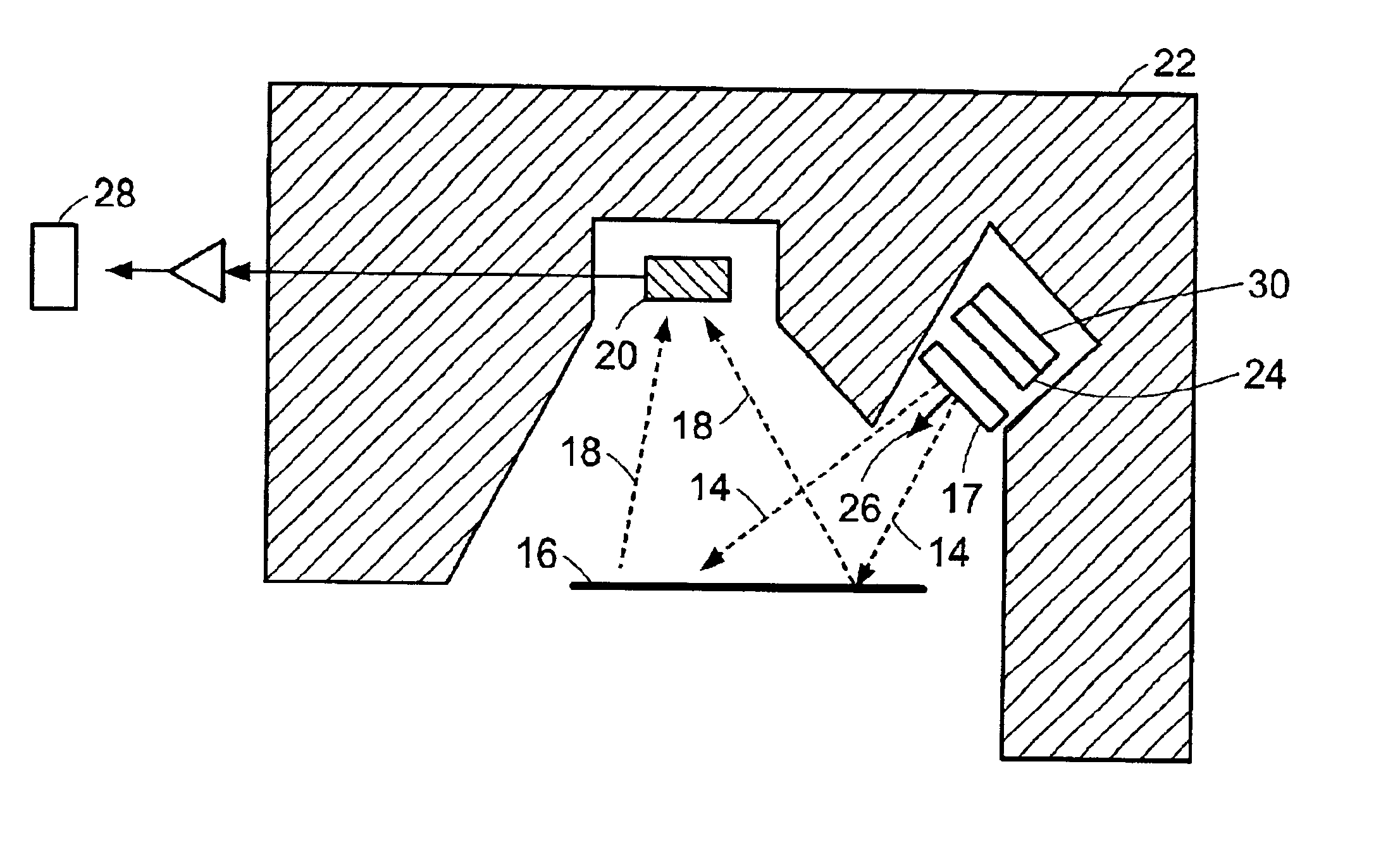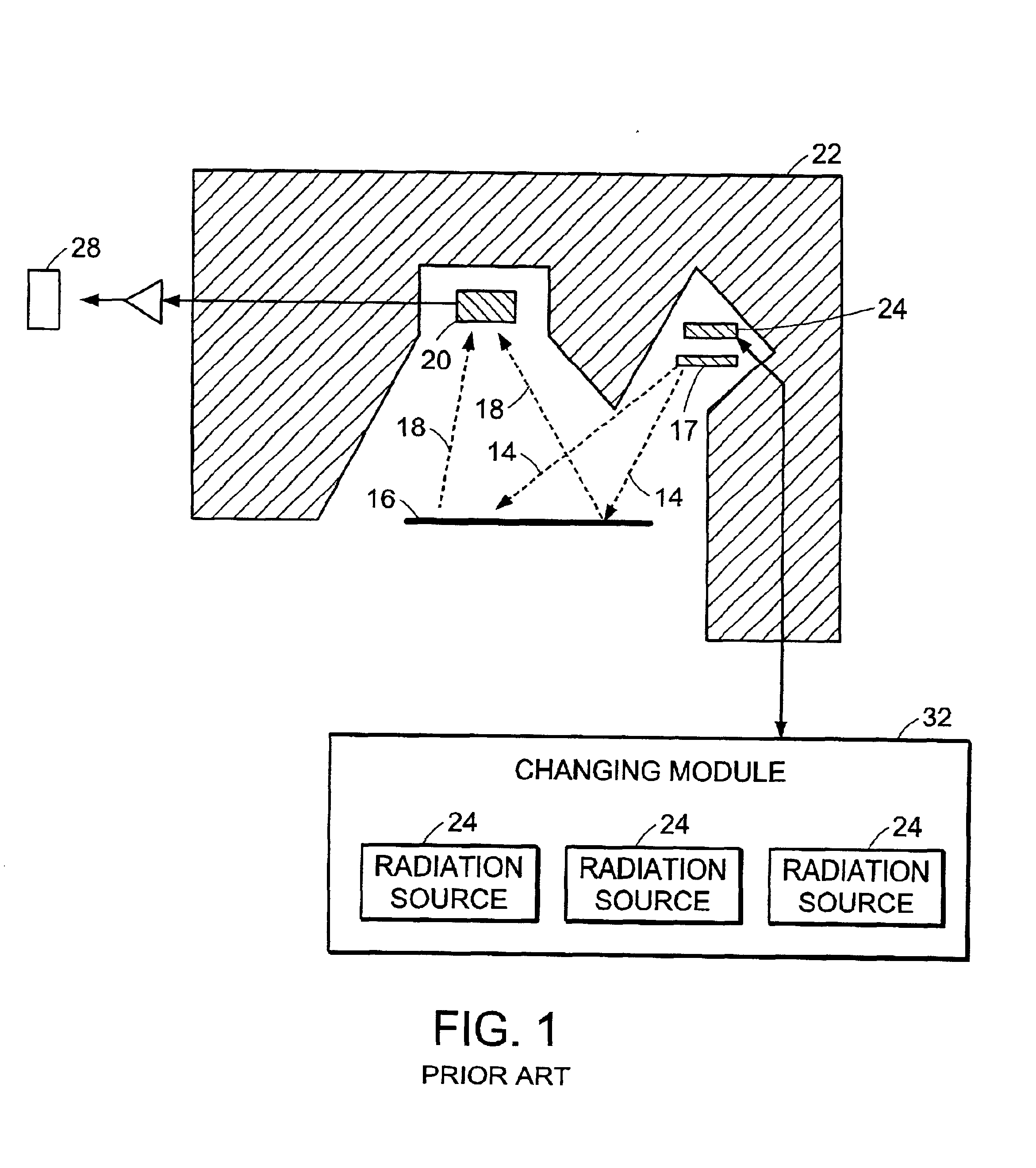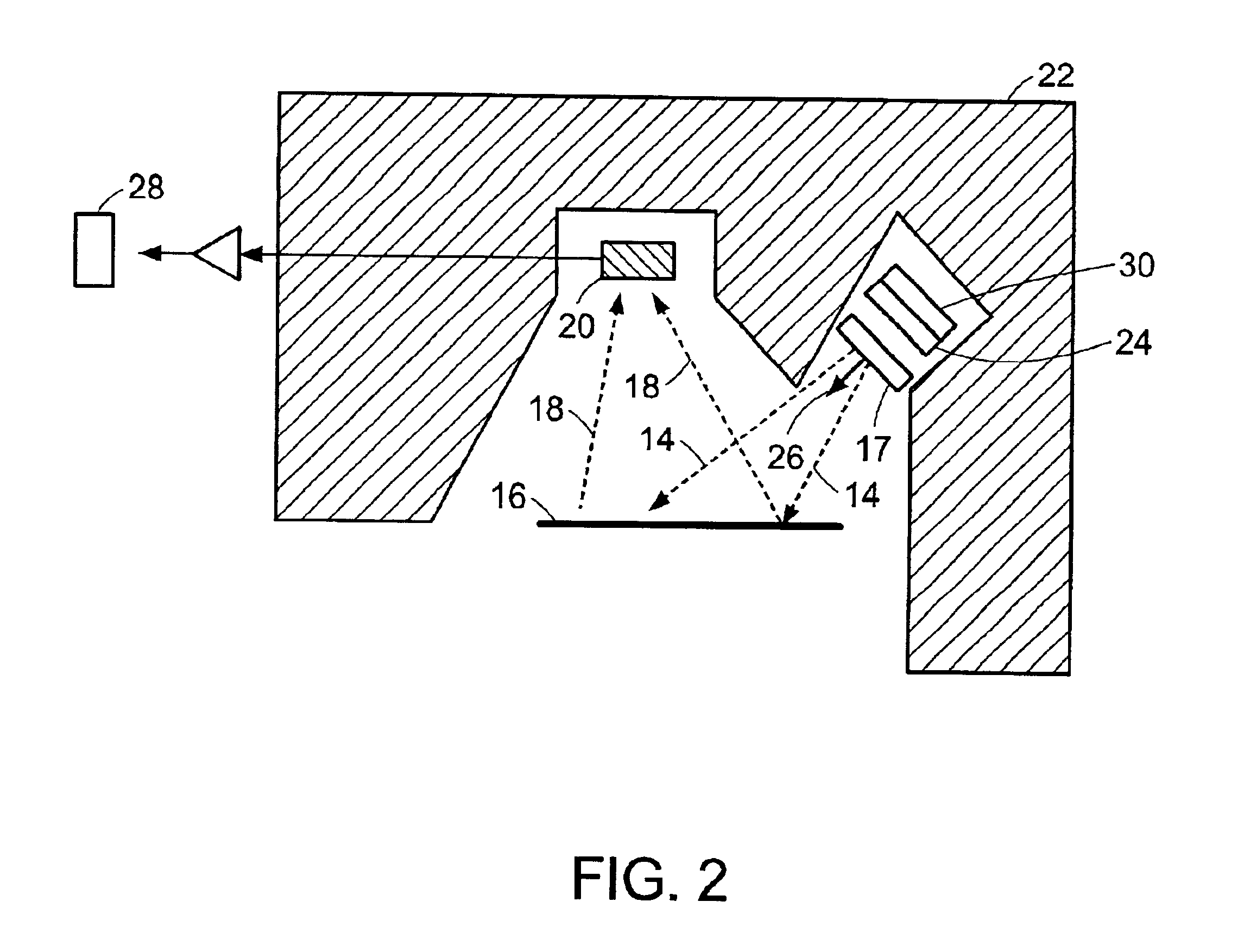X-ray fluorescence analyzer
a fluorescence analyzer and x-ray technology, applied in the direction of material analysis using wave/particle radiation, material analysis by measuring secondary emission, instruments, etc., can solve the problems of increasing the cost of additional radioactive sources, increasing the cost proportionally, and high cost of individual radioactive sources
- Summary
- Abstract
- Description
- Claims
- Application Information
AI Technical Summary
Benefits of technology
Problems solved by technology
Method used
Image
Examples
Embodiment Construction
In the following specification, the probabilities for detecting the characteristic x-rays, Compton scattering and Rayleigh scattering are given by the following equations. Backscattered geometry is assumed and geometrical effects and detector efficiencies are subsumed in the K constants. It is further assumed that the analyzed samples are thick enough so that exponential terms that depend on the source thickness are negligible. It should be understood by one of ordinary skill in the art that the presentation of these equations is for clarity and that a more complete version of the equations, without assumptions, may suitably be used without straying from the intent of the invention. Characteristic x-ray intensity (equation 1): ##EQU1##
Compton intensity (equation 2): ##EQU2##
Rayleigh intensity (equation 3): ##EQU3##
where .mu..sub.p.e. is the mass absorption coefficient for the photoelectric effect
where .mu..sub.Rayleigh is the mass absorption coefficient for the Rayleigh scattering
wh...
PUM
| Property | Measurement | Unit |
|---|---|---|
| atomic number | aaaaa | aaaaa |
| atomic number | aaaaa | aaaaa |
| atomic number | aaaaa | aaaaa |
Abstract
Description
Claims
Application Information
 Login to View More
Login to View More - R&D
- Intellectual Property
- Life Sciences
- Materials
- Tech Scout
- Unparalleled Data Quality
- Higher Quality Content
- 60% Fewer Hallucinations
Browse by: Latest US Patents, China's latest patents, Technical Efficacy Thesaurus, Application Domain, Technology Topic, Popular Technical Reports.
© 2025 PatSnap. All rights reserved.Legal|Privacy policy|Modern Slavery Act Transparency Statement|Sitemap|About US| Contact US: help@patsnap.com



